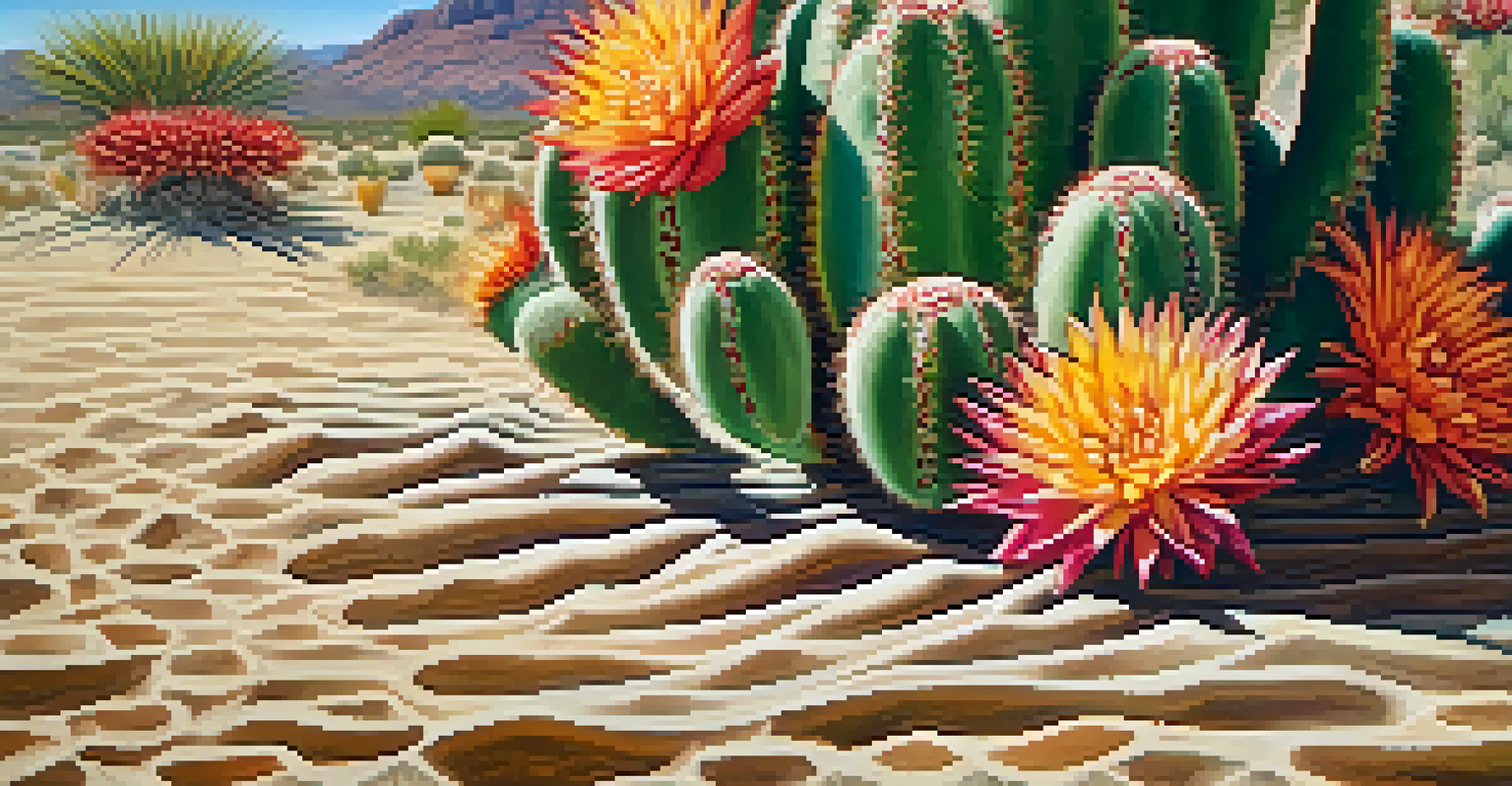Cultural Practices in Entheogen Use: Sustainability Insights

Understanding Entheogens and Their Cultural Significance
Entheogens are substances, often derived from plants, used in various cultures for spiritual or religious purposes. These substances, which can induce altered states of consciousness, have been integral to many indigenous practices around the world. For these communities, entheogens are not just tools for exploration; they are sacred elements of their cultural identity and history.
The use of entheogens often ties deeply into the fabric of community rituals, where they facilitate connection to the divine, other people, and nature.
The use of entheogens often ties deeply into the fabric of community rituals, where they facilitate connection to the divine, other people, and nature. For instance, the use of peyote in Native American Church ceremonies highlights how these substances play a crucial role in spiritual healing and community bonding. This cultural significance emphasizes the need to approach entheogen use with respect and understanding.
As we look at entheogen use today, it's essential to recognize the blend of tradition and modernity. Many indigenous practices face challenges from globalization and commercialization, which can dilute their cultural meanings. Preserving these practices while promoting sustainability is a pressing concern that deserves our attention.
Sustainable Harvesting of Entheogenic Plants
Sustainability in entheogen use begins with the responsible harvesting of plants. Many entheogenic species, like ayahuasca and psilocybin mushrooms, have been over-harvested due to increasing demand. Sustainable practices, such as cultivation and reforestation, are essential to ensuring these plants can be available for future generations.

For instance, some communities have started cultivating their own entheogenic plants, utilizing permaculture methods to restore ecosystems while meeting their spiritual needs. This approach not only preserves the plants but also supports biodiversity and environmental health. As more people learn about these practices, there's hope for a shift towards more sustainable methods of entheogen use.
Cultural Significance of Entheogens
Entheogens are sacred substances used in various cultures for spiritual connection and community bonding.
Education plays a critical role in promoting sustainable harvesting practices. By informing users about the ecological importance of these plants and the threats they face, we can encourage more mindful consumption. This collective awareness can help protect these sacred plants and the cultures that depend on them.
Cultural Appropriation vs. Cultural Exchange
In the context of entheogen use, the line between cultural appropriation and cultural exchange can often become blurred. Cultural appropriation occurs when elements of a marginalized culture are adopted by a more dominant culture without understanding or respecting their significance. This can lead to the commodification of sacred practices, stripping them of their meaning and context.
Education is a powerful tool for promoting sustainable practices in entheogen use.
On the other hand, cultural exchange is characterized by mutual respect and understanding, where knowledge and practices are shared among cultures in a way that honors their origins. For example, when individuals from Western cultures participate in ceremonies led by indigenous peoples, with permission and respect, it can foster a deeper appreciation for the traditions and their underlying philosophies.
Navigating this complex landscape requires awareness and sensitivity. Engaging with entheogenic practices should involve learning from the cultures that have traditionally used them, ensuring that their voices are heard and honored in the conversation. This balanced approach promotes sustainability and respect for cultural heritage.
The Role of Education in Sustainable Practices
Education is a powerful tool for promoting sustainable practices in entheogen use. By raising awareness about the ecological and cultural implications of entheogenic substances, we can empower individuals to make more informed choices. Workshops, community gatherings, and educational programs can foster a deeper understanding of these practices and their significance.
For example, educational initiatives that include indigenous voices and perspectives can provide invaluable insights into traditional knowledge. This not only enriches the learning experience but also helps to validate and honor the cultural practices that have been passed down through generations. When knowledge is shared respectfully, it can lead to a greater commitment to sustainability.
Importance of Sustainable Practices
Responsible harvesting and cultivation of entheogenic plants are essential to preserve them for future generations.
Furthermore, integrating sustainability into the curricula of institutions that study entheogens can create a generation of practitioners who prioritize ecological health and cultural respect. By emphasizing the importance of sustainable practices, we can cultivate a community of advocates who are dedicated to preserving both the plants and the cultures they originate from.
Modern Practices and Innovations in Entheogen Use
Modern practices surrounding entheogen use are evolving, often integrating traditional methods with new innovations. One example is the rise of guided retreats that focus on responsible use and the importance of integration after experiences. These retreats emphasize the need for participants to process their experiences in a supportive environment, fostering a deeper understanding of their journeys.
Moreover, technology is playing a role in shaping contemporary entheogen practices. Online communities and resources provide a space for individuals to share experiences, knowledge, and best practices, promoting a culture of responsible use. This democratization of information can lead to more sustainable engagements with these powerful substances.
As these practices evolve, it’s crucial to maintain a connection to traditional teachings. Balancing innovation with respect for cultural origins ensures that modern practices remain grounded in the wisdom of those who have used these substances for centuries. This fusion can create a more holistic approach to entheogen use that values both sustainability and cultural integrity.
Legal Considerations and the Future of Entheogen Use
The legal landscape surrounding entheogens is shifting, with many jurisdictions beginning to recognize the potential benefits of these substances. As research on the therapeutic effects of entheogens gains traction, more countries are considering decriminalization or legalization. This change opens up discussions about how to incorporate sustainable practices into legal frameworks.
For instance, some regions are establishing guidelines that prioritize the protection of indigenous rights and the preservation of traditional knowledge. This could lead to collaborative efforts between governments and indigenous communities to ensure that entheogen use is both respectful and sustainable. Creating policies that incorporate these perspectives is vital for the future of entheogen practices.
Navigating Cultural Exchange
Engaging with entheogenic practices requires respect for their origins to avoid cultural appropriation and promote mutual understanding.
However, as the legal status of entheogens evolves, it’s essential to remain vigilant against exploitation and commercialization. Advocating for ethical practices and sustainable models of use should be at the forefront of this movement. By prioritizing sustainability and cultural respect, we can help shape a future where entheogen use benefits both people and the planet.
Case Studies: Successful Sustainable Practices
Examining successful case studies can illuminate effective sustainable practices in entheogen use. One notable example is the work of indigenous communities in the Amazon, who have established community-led initiatives to protect their sacred plants. Through reforestation efforts and education, these communities are actively preserving their cultural heritage while promoting environmental sustainability.
Another inspiring case is the emergence of social enterprises that focus on the ethical sourcing and use of entheogenic plants. These organizations often collaborate with indigenous peoples, ensuring that profits are shared and that cultural knowledge is respected. This model not only supports sustainable practices but also empowers the communities involved.

These case studies demonstrate that sustainable practices are not only possible but can thrive when communities are engaged and respected. By learning from these examples, we can inspire similar initiatives worldwide, fostering a culture of sustainability and cultural appreciation in the realm of entheogen use.